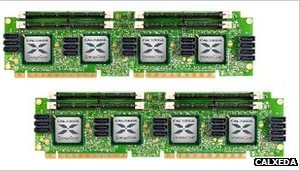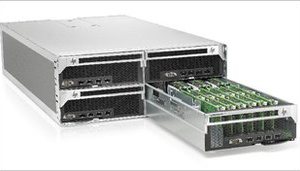Yesterday, Hewlett Packard (HP) announced a new server development platform targeted at reducing "complexity, energy use and costs" by introducing the RedStone platform that will initially consist of Calxeda EnergyCore ARM Cortex processors. These are to be available in limited numbers for sampling during the first half of 2012.
Before we jump the gun, HP has announced that it also intends to introduce Intel Atom and other processor variations of the RedStone platform in the future and recommends that these servers be seen as an alternative as opposed to a replacement for full-power Intel systems, as these low-power systems don't have the raw processing power required for more intensive tasks.
With all that said, we can't help but conjecture on the future potential of ARM in this market. HP claims that these new systems could take up to 94 per cent less space and consume up to 89 per cent less energy, depending on the usage scenario, with the integration of more than 2,800 ARM server chips possible in a single rack.


Despite HP's claims that these CPUs don't match up to high-power Intel CPUs in intensive scenarios, at 1.5 watts per server-on-a-chip, the overall achievable performance in the same power envelope can't be far off. It's also worth noting that the EnergyCore components HP is adopting are quad-core Cortex-A9 devices. Elsewhere 20nm Cortex-A15 devices with server-geared tweaks such as ECC and virtualization support, ideal for a server cluster, have already taped out. and at 2.5GHz the technology is expected to handle 35,000 million instructions per second (MIPS) against, for example, the 147,600 MIPS of an Intel Core i7 Extreme Edition 980X hexa-core CPU.
Already on the horizon is ARM's new 64-bit ARMv8 architecture, with company Applied Micro recently announcing its X-Gene ARMv8 server-on-a-chip expected to see prototype silicon available from as early as the second half of 2012, despite ARM's predictions of 2014. The new product will start at 3GHz, support DDR3 memory, two 10 Gigabit Ethernet ports, SATA storage and PCI-Express peripherals, all on the same die, with an expected power consumption of 2 watts per core. What's exceptionally important from a server cluster standpoint is these new chips will feature a 1Tb/s interconnect enabling high-speed, cache-coherent scaling across 128 cores.
It's exciting times for ARM and whilst long-term Intel customer HP suggests for now that ARM architecture is but one alternative, unless Intel successfully improves upon its Atom architecture or announces a significant new product, by adopting ARM now, HP, with a suggested 30 per cent slice of the server market, could be opening the door to an interesting future for the British company and indeed for itself.













